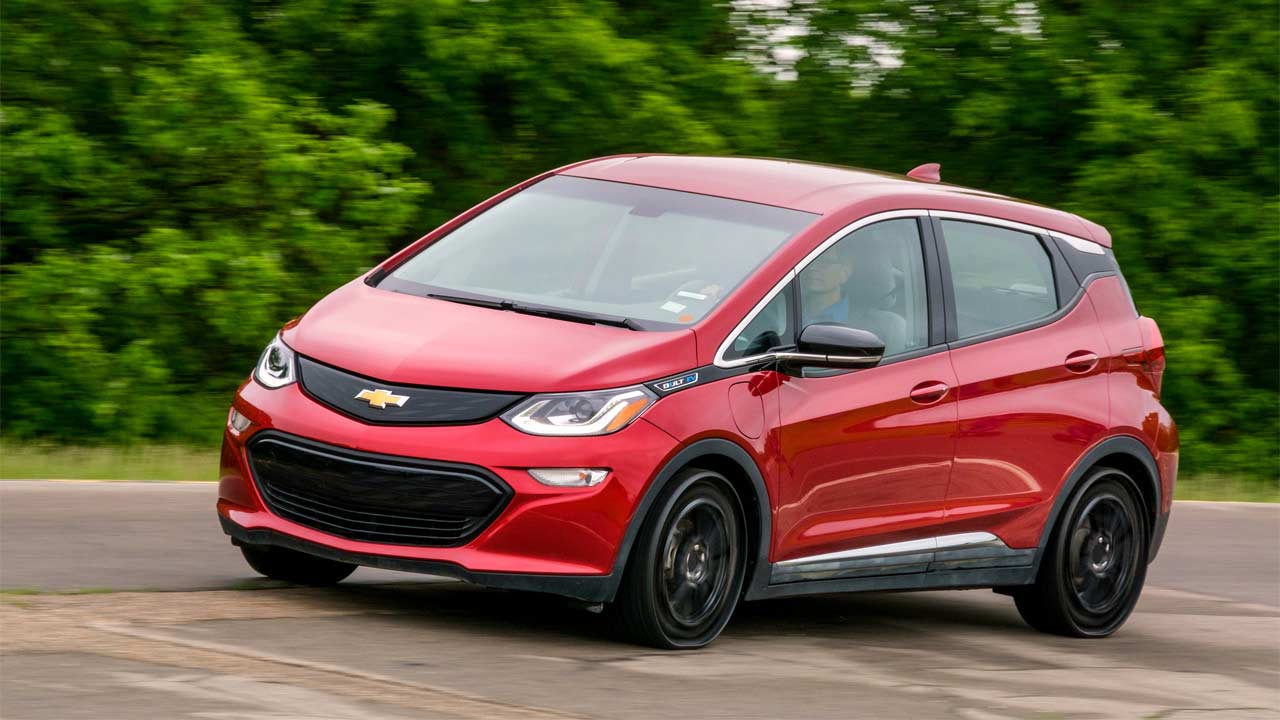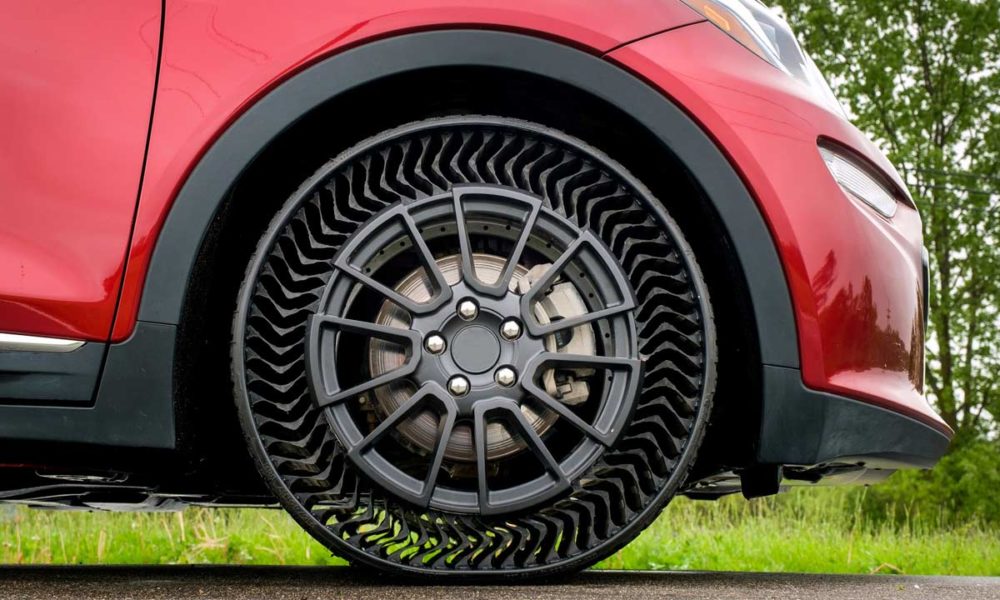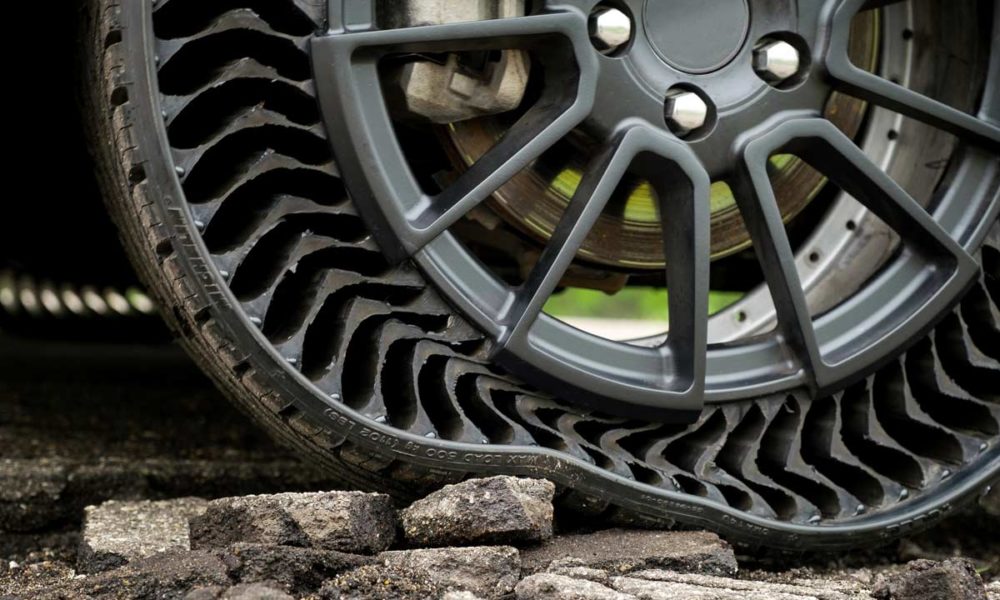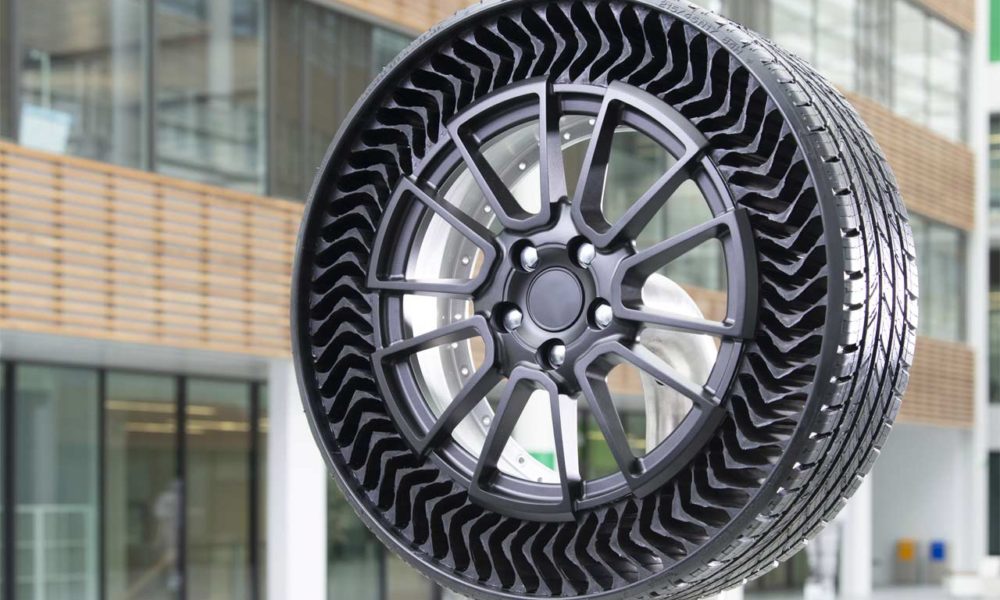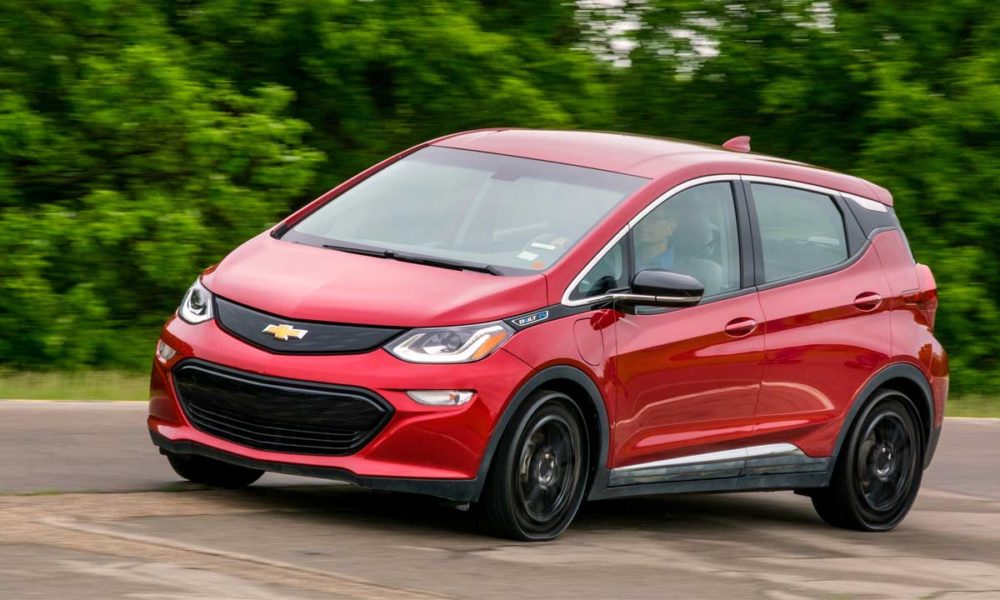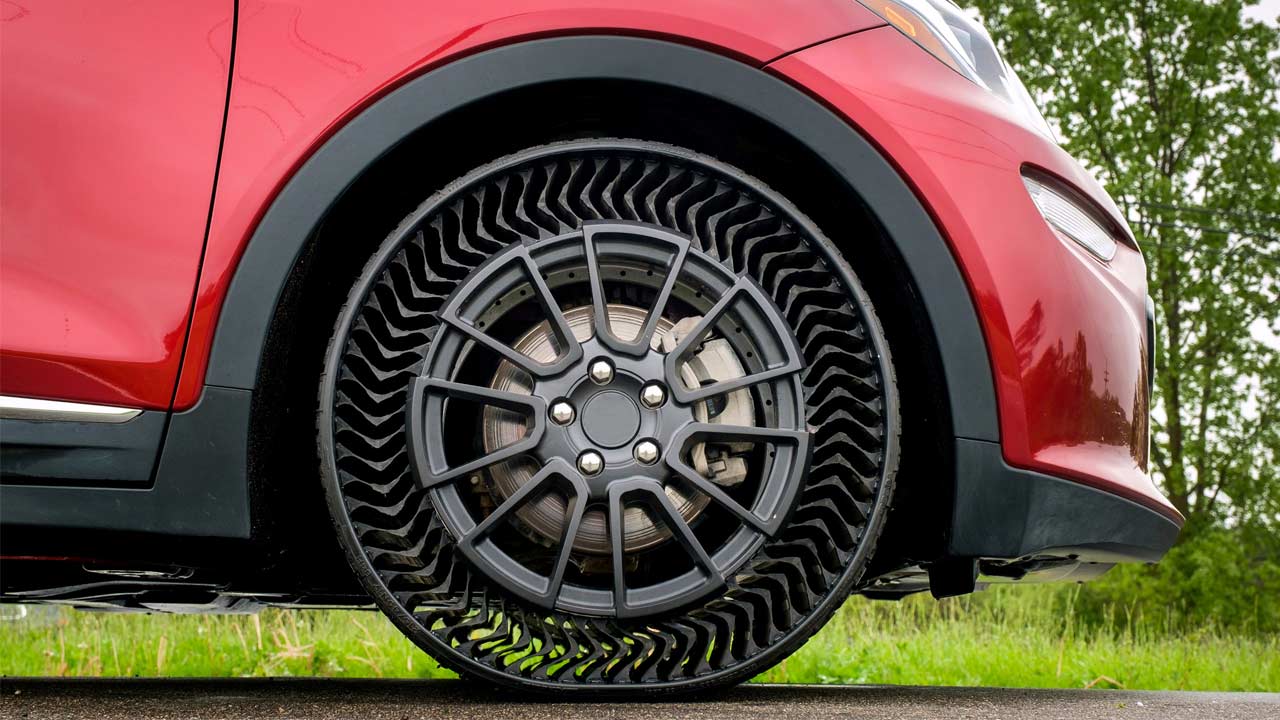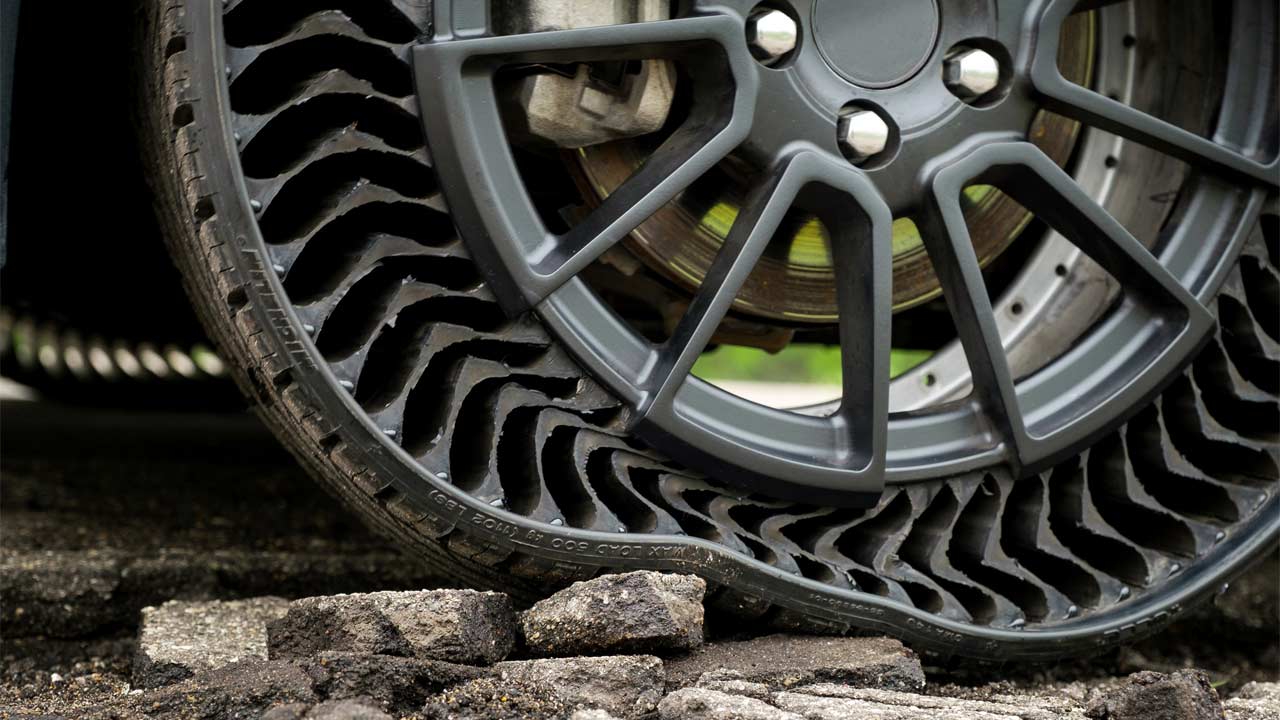Although the attempts of developing airless tires for passenger vehicles date back to the 1940s, they never made it to our local tire shops, most likely due to practicality reasons; they always looked “prototype”. The Michelin-GM Uptis tire we see here, is also a prototype at the time of publishing this story, however, they might soon be available for purchase.
 Popular Science Monthy, May 1938
Popular Science Monthy, May 1938
Michelin’s attempt at developing airless tires dates back to 2005 when they presented the Tweel—a combination of tire and wheel, of course. The Unique Puncture-Proof Tire System or Uptis for short, is an evolved version of earlier attempts.
The Uptis’ “spokes” are made of a proprietary, high-strength resin embedded fibreglass. According to Michelin, the composite materials used enable Uptis to bear the car’s weight at road-going speeds. With these new tires, Michelin hopes to offer significant potential for reducing the use of raw materials and waste, since the tires are resistant to flats and blowouts.
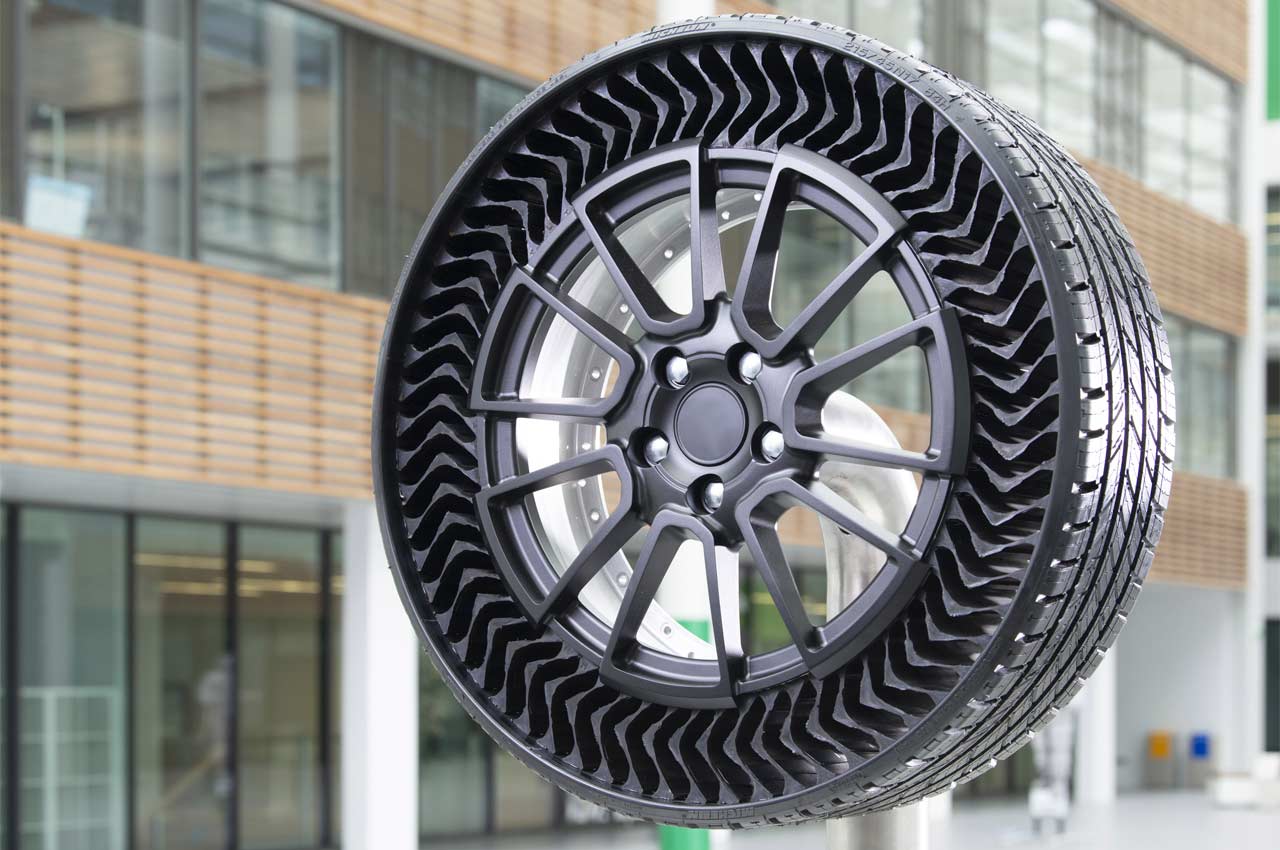
These innovations combine to eliminate compressed air to support the vehicle’s load, and result in extraordinary environmental savings: approximately 200 million tires worldwide are scrapped prematurely every year as a result of punctures, damage from road hazards or improper air pressure that causes uneven wear. These advancements through the Uptis Prototype demonstrate Michelin’s and GM’s shared commitment to delivering safer, more sustainable mobility solutions.
If you’re wondering how soon these tires will be available for purchase, Michelin hopes to introduce Uptis on passenger vehicles as early as 2024.
Michelin also has a vision for 3D printed tires, and connected tires equipped with sensors. In the latter, the tire’s real-time information can be monitored via a mobile app.
Also, read: Bridgestone develops airless bicycle tires
Sources: Michelin, Popular Science

Leave a Reply
Note: Comments that are unrelated to the post above get automatically filtered into the trash bin.
